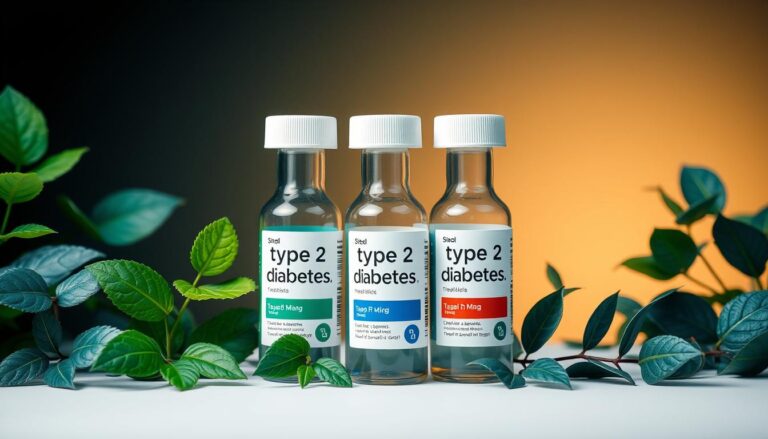Top 5 Superfoods for Accelerating Fat Loss
In today’s fast-paced world, achieving and maintaining a healthy weight can be a challenging task. Many people are on a constant quest to shed excess fat and improve their overall well-being.
While there is no magical solution to weight loss, incorporating superfoods into your diet can significantly accelerate fat loss and support your journey to a healthier you. In this article, we’ll explore the top 5 superfoods that can help you shed those extra pounds effectively.

What Are Superfoods?
Superfoods are a category of foods that have gained widespread recognition for their exceptional nutritional value and health benefits. These foods are often referred to as “super” because they are densely packed with essential nutrients, such as vitamins, minerals, antioxidants, and phytochemicals. What sets superfoods apart is their ability to positively impact various aspects of health and well-being, making them a valuable addition to any diet.
Here are some key characteristics that define superfoods:
- Nutrient Density: Superfoods are incredibly rich in essential nutrients while typically being low in calories. They provide a concentrated source of vitamins, minerals, and other bioactive compounds, offering more nutritional value per calorie compared to other foods.
- Antioxidants: Many superfoods are abundant in antioxidants, which play a crucial role in protecting the body against oxidative stress and free radical damage. Antioxidants help reduce inflammation and support overall health.
- Phytochemicals: Superfoods often contain phytochemicals, which are naturally occurring compounds found in plants. These phytochemicals have been linked to various health benefits, including anti-inflammatory and anticancer properties.
- Heart Health: Several superfoods promote heart health by helping to lower cholesterol levels, reduce blood pressure, and improve blood vessel function. These factors contribute to a reduced risk of cardiovascular diseases.
- Weight Management: Superfoods can aid in weight management and fat loss due to their ability to increase satiety, boost metabolism, and support stable blood sugar levels.
- Gut Health: Some superfoods are rich in dietary fiber, which is essential for a healthy gut. Fiber promotes regular digestion, aids in the absorption of nutrients, and supports a balanced microbiome.
- Brain Health: Certain superfoods are known for their brain-boosting properties. They may enhance cognitive function, memory, and mood due to their high content of brain-healthy nutrients.
- Immune Support: Superfoods are often loaded with vitamins and minerals that bolster the immune system, helping the body fend off infections and illnesses.
- Skin Health: The antioxidants and phytochemicals in superfoods can contribute to radiant and youthful skin by protecting against premature aging and skin damage.
- Anti-Inflammatory: Chronic inflammation is linked to various health issues, including obesity and chronic diseases. Many superfoods have potent anti-inflammatory properties that can help reduce inflammation in the body.
It’s important to note that there is no official definition or exhaustive list of superfoods, and the term may be used somewhat loosely. However, a wide range of foods fit the superfood criteria, including leafy greens like kale and spinach, colorful berries, nuts and seeds, fatty fish like salmon, avocado, turmeric, and green tea, among others.
Incorporating a variety of superfoods into your diet can contribute to improved health, increased vitality, and may support weight loss goals. However, it’s essential to remember that no single food can provide all the necessary nutrients, so a balanced diet that includes a diverse range of foods is key to overall health and well-being.
The Role of Nutrition in Fat Loss
Before you embark on a fat loss journey, it’s essential to recognize that what you eat plays a fundamental role in achieving your goals. Nutrition serves as the cornerstone of effective weight management, and here’s why:
- Caloric Balance: Weight management, whether it’s losing or gaining weight, hinges on the concept of caloric balance. To shed excess fat, you need to create a calorie deficit, meaning you consume fewer calories than you burn. Proper nutrition helps you achieve this balance by providing your body with the right amount of energy it needs to function while still creating that deficit for fat loss.
- Metabolism: Nutrition has a direct impact on your metabolism, which is the process by which your body converts food into energy. Certain foods, such as those rich in protein, can increase your metabolic rate, helping you burn more calories even at rest. Proper nutrition ensures that your metabolism functions optimally, making it easier to lose fat.
- Hunger and Satiety: The types of foods you eat can significantly affect your hunger and satiety levels. Foods rich in fiber, protein, and healthy fats tend to keep you feeling full for longer periods, reducing the urge to overeat or snack on unhealthy options. Nutrition choices that prioritize these components help control your appetite and calorie intake.
- Cravings: Proper nutrition can also help curb unhealthy cravings. For example, consuming sugary and highly processed foods can lead to blood sugar spikes and crashes, resulting in cravings for more of the same. A balanced diet that includes complex carbohydrates, lean proteins, and healthy fats can help stabilize blood sugar levels, reducing the likelihood of cravings.
- Nutrient Density: Nutrition plays a crucial role in ensuring that your body receives all the essential nutrients it needs to function optimally. When you focus on nutrient-dense foods, you provide your body with vitamins, minerals, and antioxidants that support overall health. This is important during fat loss because it ensures your body doesn’t suffer from nutrient deficiencies.
- Muscle Preservation: When you’re on a fat loss journey, it’s vital to preserve lean muscle mass. Proper nutrition, particularly adequate protein intake, helps protect your muscles from being broken down for energy. Maintaining muscle is essential because it contributes to a higher metabolic rate and a more toned appearance.
- Energy Levels: Nutrition directly impacts your energy levels and overall vitality. A well-balanced diet ensures that you have the energy needed for daily activities and exercise. Low energy levels can lead to lethargy and reduced physical activity, making it harder to burn fat effectively.
- Consistency: Sustainable fat loss is often about consistency in your nutrition habits. Crash diets or extreme restrictions are challenging to maintain in the long term. Proper nutrition entails creating a sustainable eating plan that you can stick to over time, making it more likely for you to achieve and maintain your fat loss goals.
Nutrition is a fundamental aspect of your fat loss journey. It affects your calorie balance, metabolism, hunger, cravings, nutrient intake, muscle preservation, energy levels, and overall consistency in your efforts. Understanding the role of nutrition and making informed dietary choices are essential steps toward achieving your fat loss goals in a healthy and sustainable way.

Superfood #1: Green Tea
Green tea has earned its reputation as a potent superfood due to its remarkable health benefits, including its potential to boost fat loss and promote overall well-being. At the heart of green tea’s effectiveness in aiding fat loss are its active components called catechins.
Catechins and Fat Loss: Green tea is rich in a specific type of catechins called epigallocatechin gallate (EGCG), which has been extensively studied for its impact on metabolism and fat oxidation. These catechins play a pivotal role in enhancing the body’s ability to burn calories and reduce fat.
Metabolism Booster: One of the key ways green tea supports fat loss is by boosting metabolism. When you consume green tea, the catechins stimulate the thermogenic process in your body, increasing the rate at which it burns calories. This means that you can burn more calories throughout the day, even when you’re at rest. This boost in metabolism can contribute to a more significant calorie deficit, which is crucial for fat loss.
Enhanced Fat Oxidation: Another remarkable aspect of green tea is its ability to increase fat oxidation. This means that when you consume green tea regularly, your body becomes more efficient at using stored fat as an energy source. This shift towards utilizing fat for energy can aid in reducing body fat percentage over time.
Appetite Regulation: Green tea may also help regulate appetite. Some studies suggest that the catechins in green tea can have an appetite-suppressing effect, potentially reducing your overall calorie intake. This, in turn, can contribute to a calorie deficit, further supporting fat loss.
Caffeine Content: Green tea naturally contains caffeine, which can provide an energy boost and increase alertness. While not as high in caffeine as coffee, green tea can still help improve exercise performance, making it easier to engage in physical activity that aids fat loss.
Antioxidant Properties: Beyond its fat-burning capabilities, green tea is also packed with antioxidants. These antioxidants combat free radicals and oxidative stress, which can contribute to inflammation and chronic diseases. By reducing inflammation, green tea supports overall health and well-being.
Dosage and Considerations: To harness the fat-burning benefits of green tea, it’s typically recommended to consume it regularly. Studies have shown that drinking around 3-5 cups of green tea per day can provide noticeable benefits. However, it’s important to be mindful of the caffeine content, especially if you’re sensitive to caffeine or consume other caffeinated products.
Incorporating green tea into your daily routine can be as simple as brewing a cup in the morning or as a midday pick-me-up. You can also find green tea extract supplements if you prefer a more concentrated form.
It’s worth noting that while green tea can be a valuable addition to your fat loss strategy, it’s not a miracle solution on its own. To achieve sustainable fat loss, combine green tea consumption with a balanced diet and regular physical activity. By adopting a holistic approach to your health and incorporating superfoods like green tea, you can enhance your chances of achieving and maintaining your fat loss goals while promoting overall wellness.
Superfood #2: Berries
Berries are a vibrant and delicious category of superfoods that include popular varieties such as blueberries, strawberries, raspberries, and blackberries. These small but mighty fruits are celebrated for their remarkable health benefits, making them an excellent choice for those looking to support fat loss and overall well-being.
Antioxidant Powerhouses: Berries are renowned for their high antioxidant content. They are packed with a variety of antioxidants, including flavonoids, anthocyanins, and polyphenols. These antioxidants play a crucial role in combating inflammation and oxidative stress in the body. Inflammation and oxidative stress can hinder weight loss progress by disrupting metabolic processes and promoting fat storage. By incorporating berries into your diet, you can help reduce these detrimental effects and support your fat loss journey.
Fiber-Rich Goodness: Berries are also rich in dietary fiber, which is a key factor in promoting fat loss. Fiber offers several benefits that can aid in your weight management efforts:
- Satiety: Fiber helps you feel full and satisfied after a meal. When you’re satiated, you’re less likely to overeat or snack on calorie-dense, unhealthy foods. This can help you maintain a calorie deficit, which is essential for fat loss.
- Stabilized Blood Sugar: The fiber in berries can slow the digestion and absorption of carbohydrates, preventing rapid spikes and crashes in blood sugar levels. This helps regulate your appetite and reduces cravings for sugary or high-calorie snacks.
- Digestive Health: Fiber promotes healthy digestion and regular bowel movements. A well-functioning digestive system ensures that your body efficiently processes and eliminates waste, contributing to a leaner and healthier you.
- Microbiome Support: Berries can also benefit your gut health by feeding beneficial gut bacteria. A balanced gut microbiome is associated with improved metabolic function and may aid in weight management.
Low in Calories: Berries are relatively low in calories compared to many other snacks or desserts. This means you can enjoy a satisfying portion of berries without consuming excessive calories. Incorporating them into your diet can help you create a calorie deficit, a fundamental aspect of fat loss.
Versatility: Berries are incredibly versatile and can be easily incorporated into various dishes. You can add them to smoothies, yogurt, oatmeal, salads, or simply enjoy them as a refreshing snack. Their natural sweetness can also satisfy your sweet tooth without resorting to high-sugar treats.
Variety Matters: Different berries offer slightly different nutrient profiles, so it’s a good idea to vary your berry consumption. For example, blueberries are known for their brain-boosting properties, strawberries are rich in vitamin C, and raspberries offer a good dose of dietary fiber. By incorporating a mix of berries into your diet, you can reap a wide range of health benefits.
Incorporating berries into your daily meals and snacks can be a delicious and nutritious way to support your fat loss goals. Whether fresh or frozen, these colorful gems not only enhance your overall health but also provide a tasty and satisfying addition to your dietary plan. Remember that while superfoods like berries are valuable, they work best as part of a well-rounded, balanced diet that includes a variety of nutrient-rich foods.

Superfood #3: Avocado
Avocado is often celebrated as a unique and nutritious superfood due to its rich, creamy texture and healthy fat content. While it is true that avocados are calorie-dense, they offer numerous benefits that make them an excellent choice for individuals looking to support weight management and overall health.
Monounsaturated Fats: The primary reason avocados stand out among superfoods is their high content of monounsaturated fats, particularly oleic acid. These heart-healthy fats have been extensively studied for their positive effects on health. Here’s how they contribute to weight management and overall well-being:
- Satiety: Despite their calorie density, avocados can actually promote feelings of fullness and satisfaction. The monounsaturated fats in avocados help trigger the release of hormones that signal your brain that you’ve had enough to eat. This can reduce the desire to snack on unhealthy, calorie-laden options between meals, ultimately supporting your weight loss goals.
- Reduced Cravings: Avocado’s healthy fats can also help curb unhealthy cravings. By providing your body with a source of satisfying fat, you’re less likely to crave sugary or high-carbohydrate snacks that can hinder your fat loss efforts.
- Stable Blood Sugar: Including avocados in your diet can help stabilize blood sugar levels. The healthy fats, along with fiber and other nutrients in avocados, slow down the digestion and absorption of carbohydrates, preventing blood sugar spikes and crashes. This can assist in controlling your appetite and preventing overeating.
Fiber and Nutrients: Avocados are not just about healthy fats. They are also a rich source of dietary fiber, vitamins, and minerals. Fiber further contributes to satiety and supports digestive health. Avocado provides essential nutrients such as potassium, vitamin K, vitamin E, vitamin C, and several B vitamins, all of which are beneficial for overall well-being.
Heart Health: Consuming avocados can promote cardiovascular health. The monounsaturated fats help lower levels of “bad” LDL cholesterol in the blood, reducing the risk of heart disease. Additionally, avocados are rich in potassium, a mineral that plays a vital role in regulating blood pressure, further benefiting your heart.
Versatile and Delicious: Avocado’s versatility makes it easy to include in various dishes. You can enjoy avocado slices in salads, spread it on whole-grain toast, blend it into smoothies for added creaminess, or use it as a substitute for unhealthy fats in recipes. Its mild, buttery flavor complements both savory and sweet dishes.
Balanced Nutrition: While avocados are calorie-dense, they offer a well-rounded nutritional profile that can enhance the overall quality of your diet. When incorporated into a balanced eating plan, avocados provide a satisfying and nutritious component that supports fat loss without sacrificing flavor or enjoyment.
It’s important to consume avocados in moderation, especially if you’re mindful of calorie intake. Incorporating half an avocado or a reasonable portion into your meals can provide you with the benefits of healthy fats, fiber, and essential nutrients without excessive calorie consumption.
Avocados are a unique superfood that stands out for their healthy fats, satiety-promoting properties, and heart-healthy benefits. When integrated into a well-balanced diet, they can be a valuable asset in your fat loss journey while supporting your overall health and well-being.

Superfood #4: Salmon
Salmon is a remarkable superfood that stands out among the choices for its rich omega-3 fatty acid content and numerous health benefits. It’s a fatty fish that provides a wealth of nutrients while being particularly advantageous for heart health and supporting fat loss.
Omega-3 Fatty Acids: The key highlight of salmon is its omega-3 fatty acid content, primarily consisting of eicosapentaenoic acid (EPA) and docosahexaenoic acid (DHA). These healthy fats are essential for various bodily functions and offer significant advantages when it comes to fat loss and overall well-being.
Heart Health: Salmon’s omega-3 fatty acids play a crucial role in promoting cardiovascular health. They can:
- Lower Triglycerides: Omega-3s have been shown to reduce triglyceride levels in the blood, which is essential for heart health. Elevated triglycerides are associated with an increased risk of heart disease.
- Reduce Inflammation: Chronic inflammation is a contributing factor to heart disease and other chronic conditions. Omega-3s have anti-inflammatory properties that help reduce inflammation in the body, improving overall heart health.
- Enhance Blood Vessel Function: Omega-3s can improve blood vessel function, making it easier for blood to flow and reducing the risk of blood clots and arterial plaque buildup.
- Lower Blood Pressure: Consuming salmon regularly may help lower blood pressure, further reducing the risk of cardiovascular disease.
Fat Loss and Insulin Sensitivity: Omega-3 fatty acids also play a role in fat loss. They improve insulin sensitivity, making it easier for your body to regulate blood sugar levels. Enhanced insulin sensitivity can prevent excessive insulin production, which can promote fat storage. By including salmon in your diet, you can potentially improve your body’s ability to burn fat efficiently.
Protein and Satiety: In addition to omega-3s, salmon is an excellent source of high-quality protein. Protein is known for its ability to promote feelings of fullness and satiety. When you feel satisfied after a meal that includes salmon, you’re less likely to overeat or indulge in unhealthy snacks, helping you maintain a calorie deficit for fat loss.
Nutrient Density: Salmon is not just about healthy fats and protein. It’s also a good source of essential nutrients like vitamin D, vitamin B12, and selenium, which are vital for overall health.
Versatility: Salmon can be prepared in numerous delicious ways, making it an easy addition to your diet. You can grill, bake, broil, or even enjoy it raw in sushi and sashimi. Its versatile nature allows you to include it in a variety of dishes to suit your preferences.
Balanced Diet: Incorporating salmon into a balanced diet can provide you with the omega-3 fatty acids, protein, and essential nutrients needed to support fat loss and overall well-being. It complements other healthy foods, creating a well-rounded approach to nutrition.
When including salmon in your diet for fat loss and heart health, it’s important to choose wild-caught salmon over farmed varieties whenever possible. Wild-caught salmon tends to have a higher omega-3 content and fewer environmental contaminants.
Salmon is an exceptional superfood that offers a wide range of health benefits. Its omega-3 fatty acids support heart health, improve insulin sensitivity, and aid in fat loss by reducing inflammation. By incorporating salmon into your diet as part of a balanced and nutritious eating plan, you can enhance your efforts to burn fat effectively while enjoying a delicious and satisfying meal.
Superfood #5: Chia Seeds
Chia seeds are tiny nutritional powerhouses that have gained immense popularity in recent years, and for good reason. These small seeds pack a punch when it comes to health benefits, making them an excellent choice for individuals looking to support weight loss and overall wellness.
Fiber-Rich and Satiety-Promoting: Chia seeds are exceptionally rich in dietary fiber, with just a small serving providing a significant portion of your daily recommended intake. Fiber is a key player in promoting weight loss for several reasons:
- Satiety: When you consume foods high in fiber, like chia seeds, they absorb liquid and expand in your stomach. This expansion creates a feeling of fullness and satiety, helping curb your appetite and reduce the likelihood of overeating.
- Slower Digestion: Fiber slows down the digestion and absorption of carbohydrates, preventing rapid spikes and crashes in blood sugar levels. This helps regulate your appetite and reduces cravings for high-calorie, sugary snacks.
- Digestive Health: Chia seeds promote healthy digestion by supporting regular bowel movements. Their high fiber content ensures that waste moves efficiently through your digestive tract, preventing constipation and supporting a healthy gut.
Protein and Essential Fatty Acids: Chia seeds are not only an excellent source of fiber but also provide a good dose of protein and essential fatty acids. These nutrients are essential for various bodily functions and contribute to overall well-being:
- Protein: Protein is known for its role in promoting satiety and preserving lean muscle mass during weight loss. Including protein-rich chia seeds in your diet can help you feel full and satisfied.
- Omega-3 Fatty Acids: Chia seeds are rich in alpha-linolenic acid (ALA), a type of omega-3 fatty acid. Omega-3s have been associated with improved heart health, reduced inflammation, and potential fat loss benefits by enhancing metabolic function.
Hydration and Gel Formation: When chia seeds come into contact with liquid, they form a gel-like substance due to their high soluble fiber content. This gel formation can help keep you hydrated during exercise or throughout the day. It also contributes to feelings of fullness, further supporting appetite control and calorie reduction.
Versatility: Chia seeds are incredibly versatile and can be easily incorporated into various dishes. You can sprinkle them on yogurt, oatmeal, or salads, blend them into smoothies, use them as a thickening agent in recipes, or even create chia pudding by mixing them with your choice of liquid and flavors. Their mild taste makes them a seamless addition to both sweet and savory dishes.
Balanced Nutrition: Chia seeds offer a well-rounded nutritional profile, combining fiber, protein, healthy fats, vitamins, and minerals. When included in a balanced diet, they provide valuable nutrients that support weight loss and overall health.
Incorporating chia seeds into your daily meals and snacks can be a simple yet effective way to promote satiety, control your appetite, and support your weight loss goals. Remember to hydrate adequately when consuming chia seeds to make the most of their gel-forming properties, and enjoy the numerous benefits they bring to your diet and well-being.

Incorporating Superfoods Into Your Diet
To reap the rewards of superfoods like green tea, berries, avocado, salmon, and chia seeds, consider these strategies to make them a consistent and enjoyable part of your daily meals:
- Start Your Day with Green Tea: Begin your morning routine with a cup of green tea. You can enjoy it hot or cold, with or without added flavors like lemon or honey. If you prefer a caffeine-free option, herbal teas like chamomile or peppermint are also beneficial.
- Berries in Breakfast: Add a handful of fresh or frozen berries to your breakfast. They pair well with yogurt, oatmeal, or whole-grain cereal. Berries can also be blended into your morning smoothie for a burst of flavor and nutrition.
- Avocado in Salads and Sandwiches: Incorporate avocado into your salads as a creamy and nutritious dressing or slice it to top your sandwiches. Mashed avocado can be used as a spread on whole-grain toast or as a base for avocado toast variations.
- Salmon for Dinner: Include salmon in your dinner menu. Grill, bake, or broil it with your choice of seasonings and pair it with a variety of vegetables or whole grains for a balanced meal. Consider making a tasty salmon salad or wrap for a quick and healthy dinner option.
- Chia Seeds as Toppings: Sprinkle chia seeds on your cereal, yogurt, or fruit for added texture and nutrition. You can also mix them into your beverages, such as smoothies, juices, or water. Chia seeds can absorb liquid, so allow them to sit for a few minutes before consuming to maximize their satiety-enhancing properties.
- Chia Pudding Snacks: Prepare chia pudding by mixing chia seeds with your choice of milk (dairy or plant-based) and sweeteners like honey or maple syrup. Let it refrigerate for a few hours or overnight until it thickens, creating a delicious and nutritious snack option.
- Experiment with Superfood Recipes: Look for recipes that feature these superfoods as primary ingredients. For example, explore recipes for avocado-based dips or spreads, salmon salads, and berry-infused desserts. Experimenting with different recipes can keep your meals exciting and varied.
- Meal Planning: Plan your meals in advance to ensure that you consistently include superfoods in your daily diet. Having a plan makes it easier to make healthy choices and avoid relying on convenience foods.
- Diverse Superfood Selection: Don’t limit yourself to just one superfood. Incorporate a variety of superfoods into your diet to benefit from a wide range of nutrients. Mix and match these superfoods to create balanced and satisfying meals.
- Hydration: Keep in mind that staying adequately hydrated is essential when consuming certain superfoods, especially those high in fiber, like chia seeds. Drinking enough water helps optimize their effects.
By incorporating these superfoods into your daily meals and snacks, you can harness their nutritional power to support your weight loss goals and overall well-being. Be creative in your culinary endeavors, and enjoy the delicious and healthful benefits these superfoods have to offer.

Exercise and Fat Loss
Superfoods, as discussed earlier, can play a significant role in supporting fat loss by promoting satiety, regulating blood sugar, and enhancing metabolic function. However, the synergy between nutrition and exercise is where you’ll find the most effective and sustainable fat loss results.
Here’s how regular exercise contributes to your fat loss journey:
- Calorie Expenditure: Exercise is a potent tool for burning calories. When you engage in physical activity, your body requires energy to perform various movements and exercises. This energy expenditure can create a calorie deficit, which is essential for fat loss. The greater the intensity and duration of your workouts, the more calories you burn.
- Muscle Building: Exercise, particularly resistance training or strength training, helps you build lean muscle mass. Muscle tissue is metabolically active, meaning it burns calories even at rest. The more muscle you have, the higher your resting metabolic rate, which translates to more calories burned throughout the day. This effect contributes to ongoing fat loss.
- Metabolic Boost: High-intensity workouts, such as interval training or HIIT (High-Intensity Interval Training), can boost your metabolism temporarily. This post-exercise increase in metabolic rate, known as excess post-exercise oxygen consumption (EPOC), can lead to continued calorie burning after your workout has concluded.
- Improved Insulin Sensitivity: Regular exercise can enhance insulin sensitivity, making it easier for your body to regulate blood sugar levels. This improvement in insulin function helps prevent excessive fat storage and promotes fat utilization for energy.
- Appetite Regulation: Exercise can influence your appetite and food choices. Some studies suggest that engaging in physical activity can lead to a preference for healthier foods and reduced cravings for high-calorie, sugary options. This can support your efforts to maintain a balanced and calorie-controlled diet.
- Stress Reduction: Physical activity has stress-reducing benefits. High stress levels can lead to emotional eating and an increased risk of weight gain. Regular exercise helps manage stress, making it easier to stick to your dietary plan and maintain fat loss goals.
- Cardiovascular Health: Cardiovascular exercise, such as running, swimming, or cycling, strengthens your heart and improves overall cardiovascular health. It also supports endurance and can enhance your ability to engage in longer, more intense workouts, further aiding fat loss.
- Body Composition Improvement: Exercise not only helps you shed fat but also improves your body composition. As you lose fat and build lean muscle, you’ll achieve a leaner and more toned physique.
Combining Superfoods and Exercise: To maximize fat loss, combine the benefits of superfoods with a well-rounded exercise routine. Here’s how they work together:
- Nutrient Support: Superfoods provide the essential nutrients your body needs for energy, recovery, and overall health. Consuming superfoods before or after your workouts can aid in muscle repair and energy replenishment.
- Satiety: Superfoods high in fiber and healthy fats, such as chia seeds and avocados, can help you feel full and satisfied, reducing the temptation to overeat after exercise.
- Hydration: Chia seeds, when mixed with liquid, form a hydrating gel-like substance. Staying well-hydrated during exercise is crucial, and incorporating chia seeds into your pre-workout meals or beverages can help maintain hydration.
- Post-Workout Nutrition: Berries, with their antioxidant properties, can be a beneficial addition to your post-workout recovery snack or smoothie. Antioxidants help combat exercise-induced oxidative stress and inflammation.
- Energy Boost: Complex carbohydrates from whole foods like berries and chia seeds can provide sustained energy for your workouts, improving exercise performance and endurance.
Superfoods and exercise are powerful allies in your fat loss journey. While superfoods support your nutrition and provide essential nutrients, exercise helps you create a calorie deficit, build lean muscle, improve metabolism, and enhance overall fitness. By combining a balanced diet that includes superfoods with regular physical activity, you can achieve effective and sustainable fat loss while enjoying improved health and vitality.

The Mind-Body Connection
Achieving fat loss is not just about the physical aspects of diet and exercise; it also involves a strong mind-body connection. Stress, emotional factors, and sleep patterns can significantly impact your progress. Neglecting these psychological elements can hinder your fat loss efforts. Here’s how the mind-body connection plays a role:
- Stress Management: Chronic stress can lead to hormonal imbalances, particularly elevated cortisol levels. High cortisol levels are associated with increased abdominal fat storage, making it harder to lose weight in that area. Stress can also trigger emotional eating, causing you to consume calorie-dense, comfort foods. Incorporating superfoods rich in antioxidants, like berries and green tea, can help combat the oxidative stress caused by chronic stress.
- Emotional Eating: Emotional factors often lead to unhealthy eating habits. Many people turn to food for comfort, stress relief, or as a coping mechanism. Superfoods, especially those that promote satiety and mood stability, can help mitigate emotional eating by keeping you feeling full and supporting a balanced mood.
- Sleep Quality: Poor sleep patterns and insufficient sleep can disrupt hunger hormones and appetite regulation. Sleep deprivation can increase cravings for high-calorie foods, making it challenging to maintain a healthy diet. Superfoods like chia seeds, which support stable blood sugar levels, can help regulate sleep-induced cravings.
- Energy and Mood: Nutrient-dense superfoods provide essential vitamins, minerals, and antioxidants that can stabilize your mood and energy levels. A balanced diet with these foods can help prevent mood swings and energy crashes, ensuring you have the mental and emotional resilience needed to stay on track with your fat loss goals.
Balanced Diet and Mental Well-Being
A well-balanced diet rich in superfoods can contribute to mental well-being and support your fat loss journey:
- Omega-3 Fatty Acids: Omega-3s, found in salmon, support brain health and can help alleviate symptoms of anxiety and depression. Including salmon in your diet provides these essential fats.
- Antioxidants: Berries and green tea, with their high antioxidant content, combat oxidative stress and inflammation, which are linked to mood disorders. Consuming these superfoods can contribute to a more stable mood.
- Fiber and Stable Blood Sugar: Superfoods like chia seeds, which are high in fiber, help stabilize blood sugar levels. This prevents energy crashes and mood swings associated with fluctuations in blood sugar.
- Hydration: Proper hydration, which can be supported by chia seeds, is essential for mental clarity and overall well-being. Dehydration can lead to feelings of fatigue and irritability.
- Nutrient Density: Superfoods are packed with vitamins and minerals that support cognitive function and mental clarity. A diet rich in nutrient-dense foods helps keep your mind sharp and focused.
Don’t overlook the mind-body connection when pursuing fat loss. Stress, emotional eating, and poor sleep can hinder your progress. Superfoods can play a vital role in promoting mental well-being by stabilizing mood and energy levels, combating oxidative stress, and supporting overall mental clarity. By incorporating these nutrient-dense foods into your diet, you can create a strong foundation for both physical and mental health, ultimately enhancing your fat loss journey.

Meal Planning and Portion Control
Meal planning is a strategic approach to nutrition that helps you make conscious choices about the foods you consume. It not only ensures that you incorporate nutrient-dense superfoods but also aids in portion control, preventing overconsumption and supporting your fat loss efforts.
Here are key principles to keep in mind:
- Balanced Meals: When planning your meals, aim for balance. Include a combination of lean proteins, whole grains, plenty of vegetables, and healthy fats. Superfoods can be strategically integrated to enhance the nutritional value of your meals. For example, add berries to your yogurt, avocado to your salad, or chia seeds to your smoothie.
- Superfood Integration: Superfoods, as we’ve discussed earlier, offer numerous health benefits. Incorporate them into your meals as natural ingredients to elevate both the taste and nutrition of your dishes. This not only enhances flavor but also ensures that you get the most out of these nutrient-dense foods.
- Portion Control: Paying attention to portion sizes is crucial for effective calorie management and fat loss. Even superfoods should be consumed in moderation. Be mindful of recommended serving sizes and avoid overloading your plate. Using smaller plates can help control portion sizes and prevent overeating.
- Meal Frequency: Consider spreading your meals and snacks throughout the day. Eating smaller, balanced meals more frequently can help control hunger and prevent excessive calorie intake. Superfoods like chia seeds can be a valuable addition to snacks or meals, as they promote satiety.
- Mindful Eating: Practice mindful eating by savoring each bite, eating slowly, and paying attention to hunger and fullness cues. This approach can help you become more attuned to your body’s signals, preventing overconsumption and promoting portion control.
- Hydration: Often, thirst can be mistaken for hunger. Stay hydrated throughout the day by drinking water or herbal teas. Chia seeds, when added to liquid, can help keep you hydrated and maintain a sense of fullness.
- Preparation: Plan and prepare your meals in advance. Having healthy options readily available reduces the temptation to reach for unhealthy snacks or fast food. It also allows you to incorporate superfoods intentionally into your daily diet.
- Variety: Embrace variety in your meals to prevent monotony and ensure a wide range of nutrients. Rotate superfoods and other nutrient-rich ingredients to create diverse and exciting meals that support your fat loss goals.
- Listen to Your Body: Pay attention to your body’s hunger and fullness signals. Stop eating when you feel satisfied, rather than continuing to eat until you’re full. This mindful approach to eating can prevent overconsumption.
- Seek Professional Guidance: If you’re unsure about portion sizes or meal planning, consider consulting a registered dietitian or nutritionist. They can provide personalized guidance and meal plans tailored to your specific needs and goals.
Incorporating superfoods into your meal planning, along with practicing portion control and mindful eating, forms a holistic approach to fat loss and overall well-being. By creating balanced meals, managing portion sizes, and being mindful of your eating habits, you can effectively support your fat loss journey while enjoying the nutritional benefits of superfoods.
Tracking Your Progress
Tracking your progress is a valuable tool when working towards fat loss and overall health improvement. It provides insight into your habits, helps you stay accountable, and enables you to make necessary adjustments to your diet and exercise routine. Here’s why tracking is essential:
- Dietary Tracking: Keeping a food diary or using a nutrition tracking app allows you to monitor your daily food intake. This helps you become aware of your eating habits, including portion sizes, meal frequency, and food choices. Tracking your meals can reveal patterns, such as emotional eating triggers or late-night snacking, which you can then address to support your fat loss goals.
- Exercise Log: Maintain a record of your workouts, including the type, duration, and intensity of each session. This helps you track your fitness progress, identify areas for improvement, and ensure you’re consistently engaging in physical activity to burn calories and build muscle.
- Body Measurements: Regularly measuring and tracking your body composition can provide a more accurate picture of your fat loss progress than relying solely on the scale. Use measurements like waist circumference, hip circumference, and body fat percentage to assess changes in your physique.
- Photos: Taking progress photos at specific intervals, such as every few weeks, can visually document your journey. These photos can be motivating when you compare them over time and notice physical changes in your body.
- Weight Monitoring: While weight alone is not the sole indicator of progress, it can still be a helpful metric when tracked alongside other factors. Weight fluctuations can result from various factors, including water retention and muscle gain, so it’s important not to become solely fixated on the number on the scale.
- Energy Levels: Pay attention to changes in your energy levels throughout the day. As you progress in your fat loss journey, you may notice increased energy and stamina, which can be motivating and reinforce the benefits of your efforts.
- Mood and Well-Being: Tracking your mood and overall sense of well-being can help you gauge the impact of your dietary and lifestyle choices. Superfoods, as discussed earlier, can contribute to mood stability and mental well-being, and monitoring your mood can help you recognize the benefits of including these foods in your diet.
- Accountability: Regular tracking keeps you accountable to your goals. When you record your choices and progress, you’re less likely to deviate from your fat loss plan. It also helps identify areas where you may need additional support or guidance.
- Adjustments: By tracking your progress, you can identify what’s working and what needs modification. For instance, if you notice a plateau in your fat loss, you can analyze your dietary and exercise logs to make necessary adjustments to your routine.
- Motivation: Tracking your progress provides a sense of achievement and motivation. Celebrate your successes, no matter how small they may seem, and use them as inspiration to continue working towards your goals.
To effectively track your progress, consider using journals, apps, or online platforms designed for dietary and fitness tracking. These tools make it easy to record and analyze your data over time. Remember that the frequency of tracking can vary from person to person, so find a routine that works for you and supports your commitment to your fat loss journey.
Tracking your progress is a valuable component of your fat loss journey. It helps you maintain awareness of your habits, make necessary adjustments, and stay motivated as you work towards a healthier and more fit version of yourself. By monitoring your food intake, exercise routines, body measurements, and other relevant factors, you can achieve your fat loss goals more effectively while enjoying the journey’s benefits.

Common Myths About Fat Loss and Superfoods
There are many misconceptions surrounding fat loss and superfoods. Some believe that certain foods alone can miraculously melt away fat. It’s essential to understand that no single food can achieve this. Fat loss requires a holistic approach, including a balanced diet, exercise, and lifestyle changes.
Myth 1: Superfoods Alone Melt Away Fat
One of the most prevalent misconceptions is that superfoods have magical fat-burning properties and can single-handedly lead to substantial fat loss. While superfoods are packed with essential nutrients and offer numerous health benefits, they are not a miracle solution for fat loss on their own.
Fact: Fat loss is a complex process that requires a holistic approach. Superfoods can be valuable components of a balanced diet, but they must be integrated into an overall healthy eating plan that includes portion control, calorie management, and regular physical activity. Achieving fat loss requires a calorie deficit, where you burn more calories than you consume, and this cannot be achieved by superfoods alone.
Myth 2: You Can Eat as Many Superfoods as You Want
Another misconception is that superfoods have no calorie consequences, and you can consume unlimited quantities without gaining weight. This belief can lead to overeating, which can sabotage fat loss efforts.
Fact: Even nutrient-dense superfoods contribute calories to your daily intake. While they offer various health benefits, overeating them can still result in an excess of calories, hindering fat loss progress. Portion control and mindful eating are essential, even when incorporating superfoods into your diet.
Myth 3: Superfoods Replace the Need for Exercise
Some people believe that consuming superfoods negates the need for regular exercise. They may think that these foods alone can burn enough calories to achieve fat loss.
Fact: While superfoods can support your overall health and provide essential nutrients, exercise remains a fundamental component of effective fat loss. Physical activity helps create a calorie deficit by burning additional calories and contributes to muscle development, which, in turn, boosts metabolism. A well-rounded approach that includes both a balanced diet with superfoods and regular exercise is key to successful fat loss.
Myth 4: Superfoods Are Expensive and Inaccessible
There’s a misconception that incorporating superfoods into your diet requires a substantial financial investment and that they are only available in specialty stores.
Fact: While some superfoods may be more expensive than others, many affordable options are readily available in most grocery stores. You can also choose seasonal and locally sourced superfoods to save money. Remember that a varied diet with a mix of nutrient-dense foods, including fruits, vegetables, lean proteins, and whole grains, is essential for a healthy lifestyle and doesn’t have to break the bank.
Myth 5: Superfoods Guarantee Health and Fat Loss
Another myth is that consuming superfoods guarantees good health and effortless fat loss. This belief can lead to complacency in other aspects of a healthy lifestyle.
Fact: Superfoods are indeed beneficial for health, but they are most effective when integrated into a comprehensive approach to nutrition and fitness. Achieving and maintaining fat loss requires consistency in making healthy choices, including portion control, regular exercise, adequate sleep, and stress management.
It’s essential to dispel common myths about fat loss and superfoods. While superfoods offer valuable nutrients and health benefits, they are not a magical solution for fat loss on their own. Fat loss requires a holistic approach that includes a balanced diet, exercise, lifestyle changes, and realistic expectations. By understanding the role of superfoods within this broader context, individuals can make informed choices and achieve their fat loss goals more effectively.
Start Your Weight Loss Journey Today
Incorporating superfoods into your diet can be a game-changer in your fat loss journey. These nutrient-rich foods offer a multitude of health benefits, including supporting weight loss, improving overall well-being, and promoting a healthier lifestyle. Remember that while superfoods can help, a balanced diet, regular exercise, and a positive mindset are all essential components of a successful fat loss strategy.
FAQs
- Are superfoods a replacement for exercise and a balanced diet? Superfoods complement a healthy lifestyle but are not a substitute for regular exercise and a balanced diet.
- Can I consume these superfoods in any form, or are there specific ways to prepare them for maximum benefits? You can enjoy these superfoods in various forms, but it’s best to avoid excessive processing or adding unhealthy ingredients.
- How soon can I expect to see results from incorporating superfoods into my diet? The timeline for seeing results varies from person to person, but consistency in your dietary choices is key.
- Are there any side effects or considerations to keep in mind when consuming these superfoods? While superfoods are generally safe, it’s essential to be mindful of allergies or sensitivities you may have. Consult with a healthcare
What To Do Next…
For people who want to stop struggling with their weight

We Now Have FDA Approved Semaglutide Weight Loss in Sarasota and Bradenton Florida. Book a free consultation and find out about the semaglutide cost and semaglutide side effects. Semaglutide injection are available after your free consultation.






